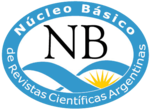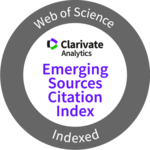Submissions
Copyright Notice
Authors who publish in Revista Teología retain the copyright and intellectual property rights to their articles and to the research data (datasets) generated during the research and publication process.
The content of Revista Teología is distributed under a Creative Commons Attribution-NonCommercial-ShareAlike 4.0 International License. For more information, please read our Open Access Policy.
Authors are permitted and encouraged to post their work and datasets in institutional and/or thematic repositories, data repositories, academic social networks, personal websites, and/or wherever they deem appropriate, in accordance with our Self-Archiving Policy.
Privacy Statement
Teología seeks to respect the privacy of its readers, authors, reviewers and contributors. This Privacy Policy describes how we collect, use, store and protect your personal information in accordance with Law 25.326. By using our website and services, you agree to the following terms of this policy:
- Information we collect
Information you enter when registering for the journal and/or submitting a manuscript:
- Personal Information
- First and Last Name
- Username on the site
- Login password
- E-mail address
- Institutional Membership
- ORCID
- Country of origin
- User type (Publisher, reader, etc.)
- Submission Information
- Articles submitted for review
- Correspondence with editors and reviewers
- Use of Information
The information collected will not be provided to third parties, nor will it be used for purposes other than the following:
- Publication of articles and management of the editorial flow.
- Communication with authors, reviewers and readers
- Improvement of our website and services
- Statistical analysis and studies
- Except in the following circumstances:
- With the consent of the data owner
- To comply with legal or regulatory obligations
- With service providers who assist us in the operation of the website (these providers are subject to confidentiality obligations)
- User Rights
You have the right to access, correct, update and delete your personal information. To exercise these rights, please contact us.
- Changes in the Privacy Policy
Revista Teología reserves the right to modify this Policy at any time. The modifications will be announced in a timely manner on this website and regular communication channels of publication and will be effective once published on our website.
- Contact
If you have questions or concerns about this Privacy Policy, you can contact us at: revista_teologia@uca.edu.ar
Last update: 27/06/2024













 Teología
Teología